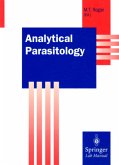It is now 17 years since the junior author's book Parasitic protozoa was first published, and 13 years since it received limited revision. The study of symbiotic protozoa has meanwhile progressed, and much of the content of the earlier book has been superseded if not displaced by recent knowledge. We believe that there is still a place for an introductory textbook, conventionally arranged on a taxonomic frame work, on this most fascinating group of organisms. It should supplement (certainly not supplant) more modern treatments from different angles. A mountain looks very different if one approaches it from different sides, though a true picture of that mountain can be built up only by the laborious summation of the views provided by all approaches. The immunology and the chemotherapy of protozoal infections are subjects so complex that we do not propose to try to encompass them in this book. We mention briefly the more commonly used therapeutic compounds in the various chapters that follow, without giving details of dosage schedules. Further information on immunology and chemo therapy can be obtained from the books listed at the end of the Introduction; the information we give on chemotherapy is largely drawn from that of James & Gilles. This book can be regarded as an evolutionary descendant of the earlier "Parasitic protozoa", referred to above, extensively revised and much more fully illustrated. We hope that it will prove as useful as its predecessor appears to have been.
Kreier and Baker have produced a concise, little introductory textbook, that is packed with information about the major groups of parasitic protozoa. Everyone working in classical veterinary, or medical protozoology should own a copy of this up-to-date, easy to use book - as a reference for its investigations and instructions and as a good text for beginning parasitology students. Journal of Protozoology








